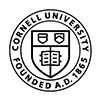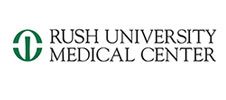Sternoclavicular (SC) Joint Arthritis
Information from AAOS.org
Background:
The sternoclavicular (SC) joint is one of the four joints that complete the shoulder. The joint is located in the spot where the clavicle (collarbone) meets the sternum (breastbone) at the base of the neck. Although not common, problems with the SC joint can arise from injury and other disorders.
Injuries to the SC joint typically result from motor vehicle accidents or participation in collision sports like football. While these injuries can be painful, most are relatively minor and will heal well without surgery. Very rarely, a hard blow to the SC joint can damage the vital organs and tissues that lie nearby. When this occurs, it is a serious injury that requires immediate medical attention.
The SC joint can also be damaged over time, as the protective tissue that covers the ends of the bones gradually wears away. This type of degenerative change in the joint can lead to pain, stiffness, and reduced motion in the shoulder and arm.
Anatomy
The sternoclavicular (SC) joint is the linkage between the clavicle (collarbone) and the sternum (breastbone). The SC joint supports the shoulder and is the only joint that connects the arm to the body.
Like the other joints in the body, the SC joint is covered with a smooth, slippery substance called articular cartilage. This cartilage helps the bones glide easily along each other as you move your arm and shoulder. Tough bands of connective tissue called ligaments surround the SC joint, giving it strength and stability.
Immediately behind the SC joint lie several important nerves and blood vessels, as well as other vital structures like the trachea (windpipe) and esophagus (which connects the throat to the stomach).
Description
Injuries and osteoarthritis are the most common disorders associated with the SC joint.
Osteoarthritis
Osteoarthritis is a degenerative "wear and tear" type of arthritis that occurs most often in people 50 years of age or older, though it may occur in younger people, too.
In osteoarthritis, the smooth articular cartilage that covers the SC joint gradually wears away. As the cartilage wears away, it becomes frayed and rough, and the protective space between the bones decreases. This can result in painful bone rubbing on bone and can also lead to a bony prominence around the joint.
Osteoarthritis develops slowly and the pain and stiffness it causes worsens over time.
Other Disorders
Other disorders associated with the SC joint include:
Inflammatory conditions, such as rheumatoid arthritis Infection
- In addition, some patients may experience slight movement or popping of the bone out of place even without some type of trauma. This condition is called "subluxation" and seems to be limited to those people who are considered "loose jointed."
Symptoms
The most common symptom of an SC joint disorder is pain in the area where the clavicle meets the sternum.Other signs and symptoms may include:
- Swelling
- Bruising
- Tenderness over the joint
- A crunching or grinding sound when you try to move your arm
- Limited range of motion in the arm
- With an inflammatory condition, such as rheumatoid arthritis, you may have simultaneous pain in other joints in your body
- With a joint infection, there may be redness over the joint and you may have fever, chills, or night sweats.
Diagnosis:
Dr. Garcia will evaluate your SC joint for injuries around the joint. He may order other imaging studies below:
- Xray
- Labs to check for infection
- MRI of the sternum
- CT scan of the sternum
Nonsurgical
In most cases, disorders of the SC joint can be treated without surgery. Nonsurgical treatment may include:
- Medications. Nonsteroidal anti-inflammatory drugs (NSAIDs), such as ibuprofen and naproxen, can help reduce pain and swelling in the joint.
If you have osteoarthritis or an inflammatory condition, your doctor may also recommend strong anti- inflammatory agents called corticosteroids, which are injected directly into the joint. Corticosteroids can provide temporary relief of pain and swelling. In many cases Dr. Garcia may do an ultrasound injection of the sternoclavicular joint.
Surgery:
For patients with an infection in the SC joint, an immediate operation is usually required to open the joint and drain the infection. This will be followed by a course of antibiotics.
Surgery for osteoarthritis can also be performed, although it is rarely required. If your pain and stiffness cannot be managed with nonsurgical treatment, however, your doctor may perform a procedure to remove bone from the arthritic and painful end of the clavicle. This will allow more space for movement.
For more information visit orthoinfo.aaos.org

















